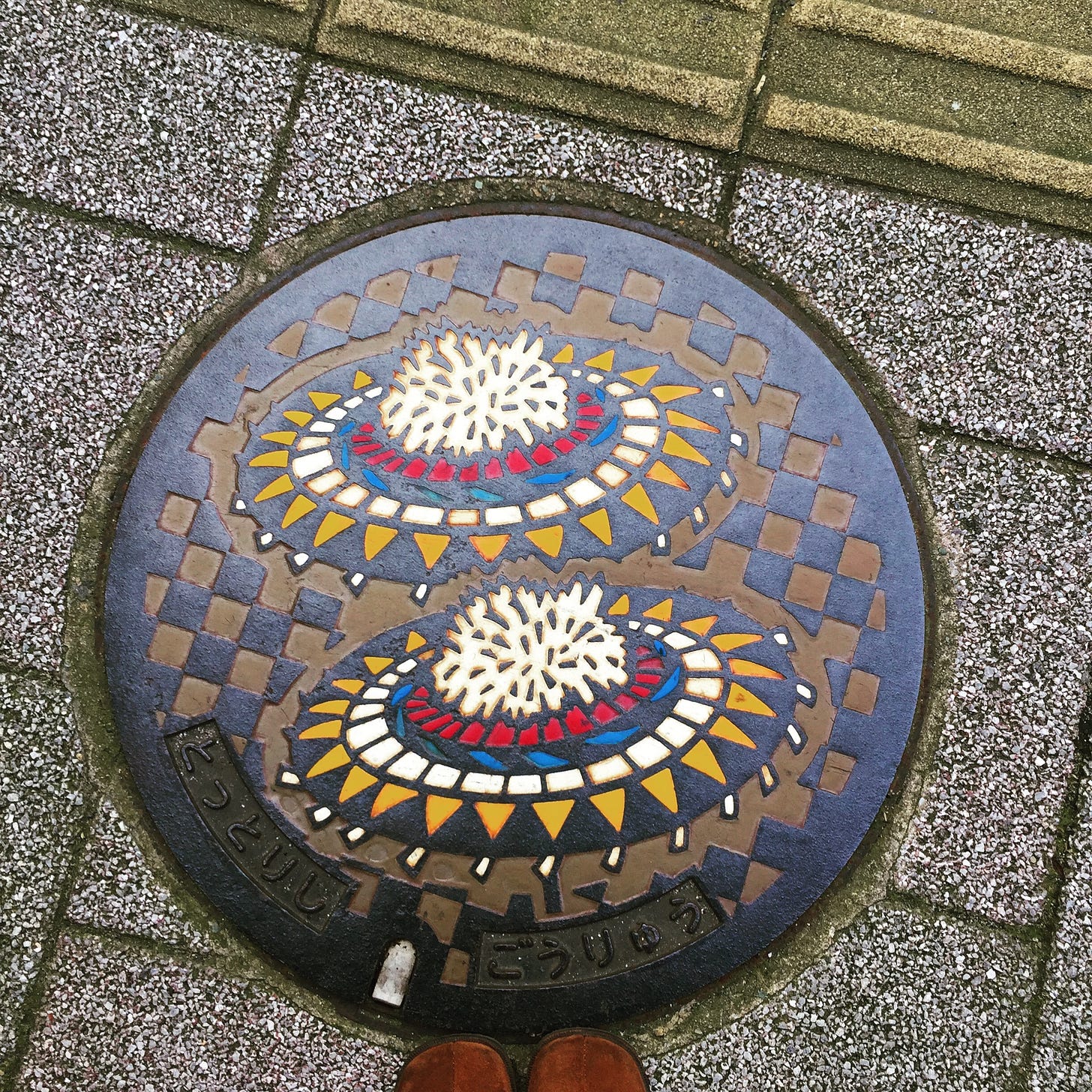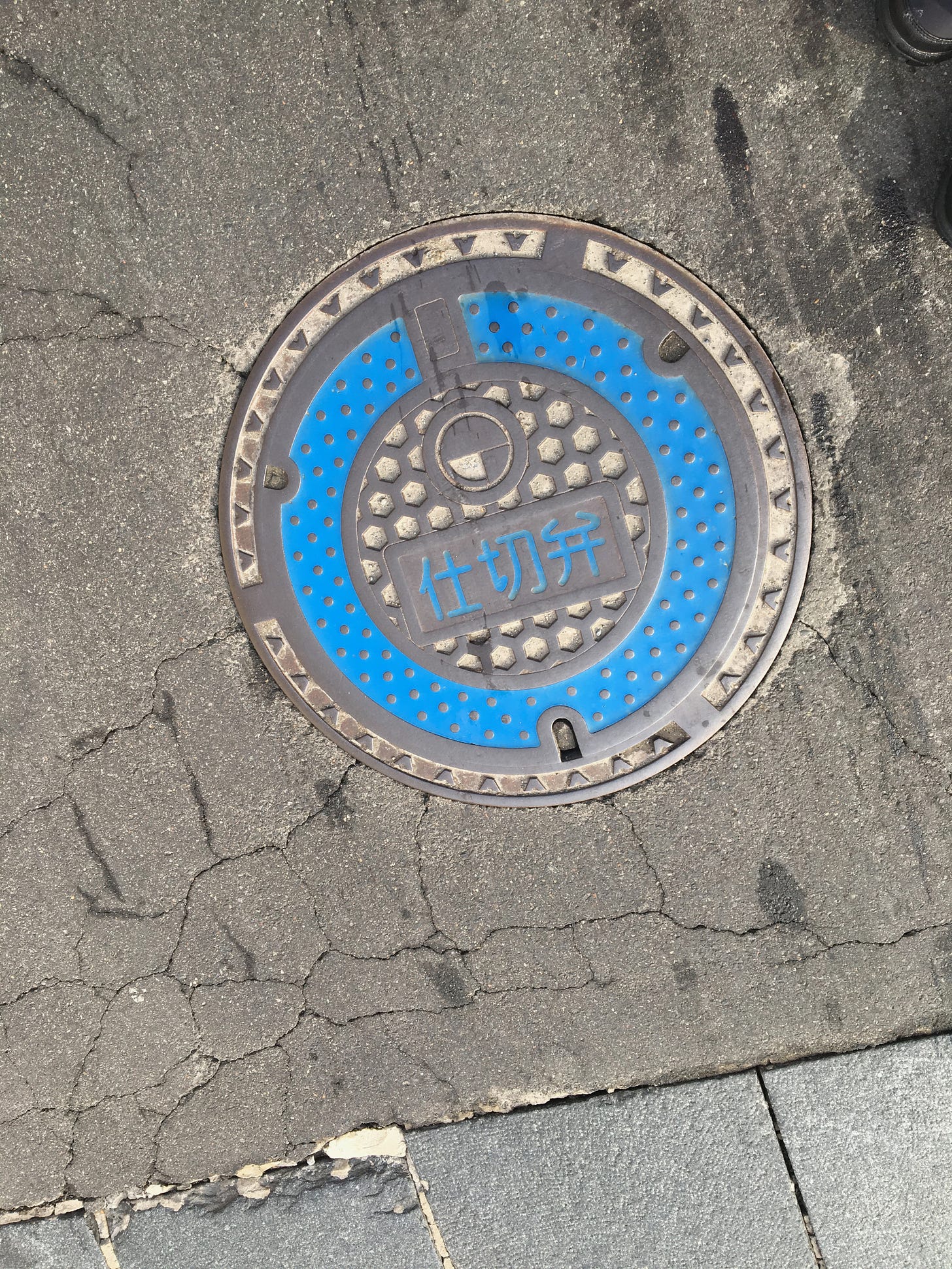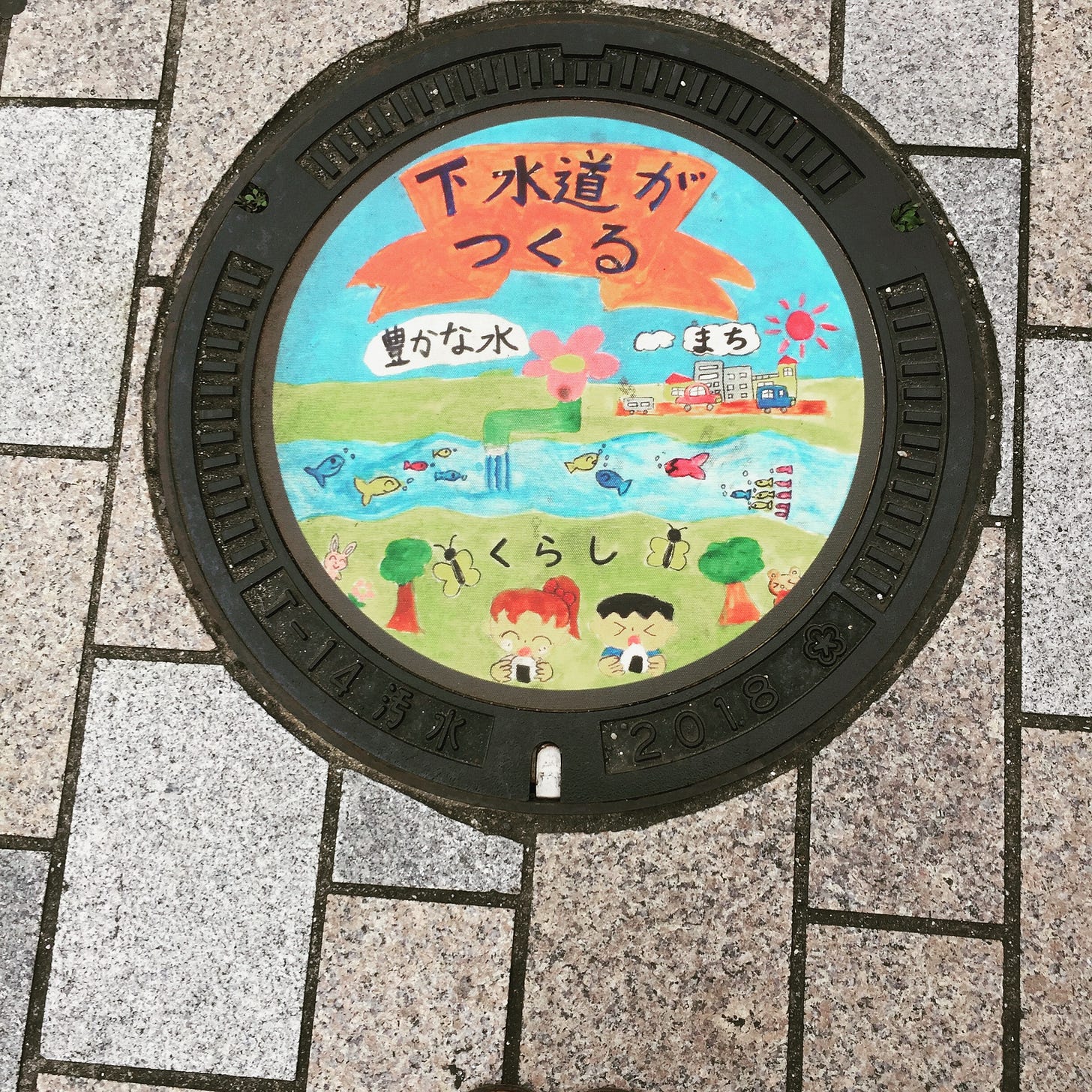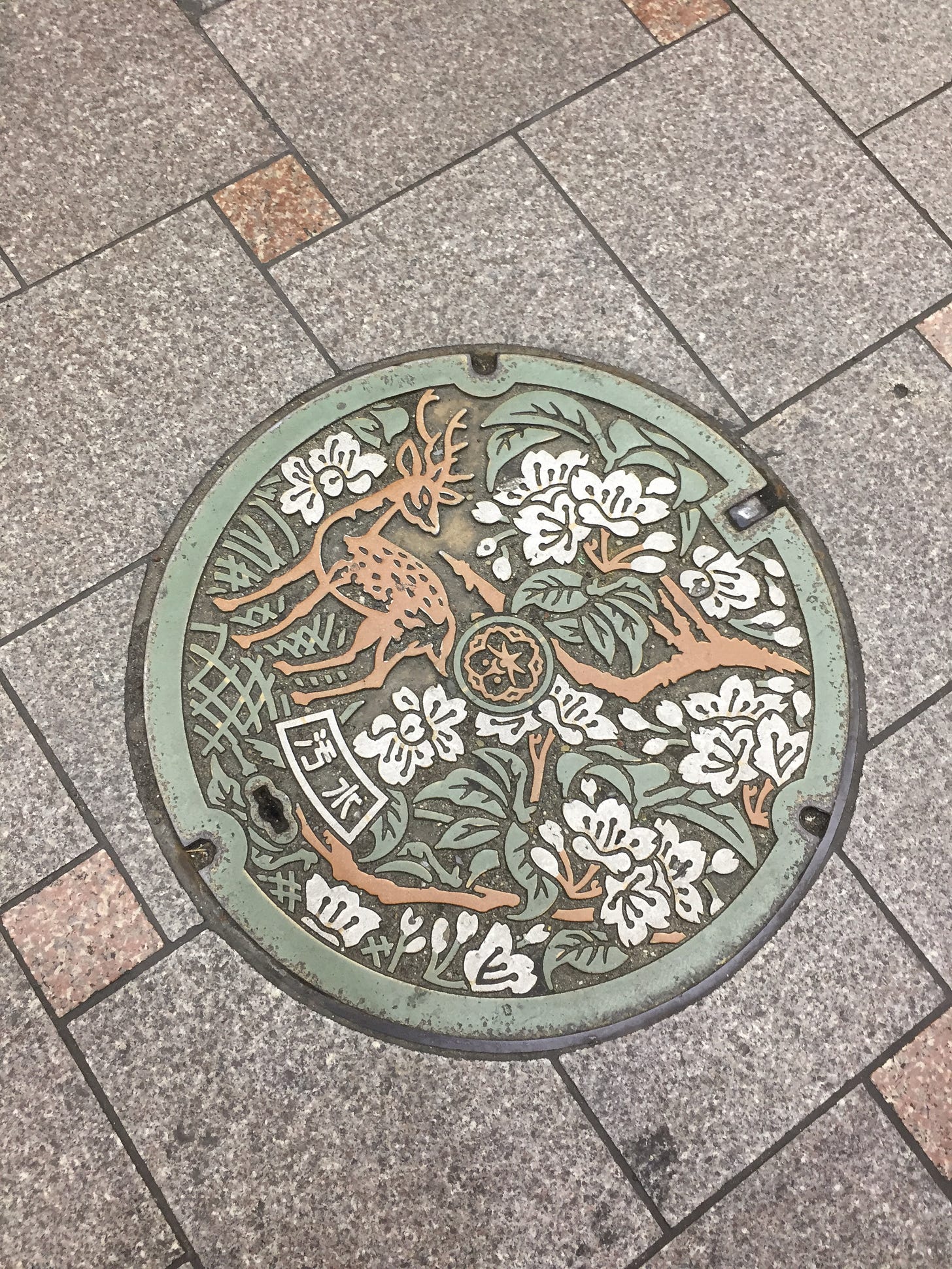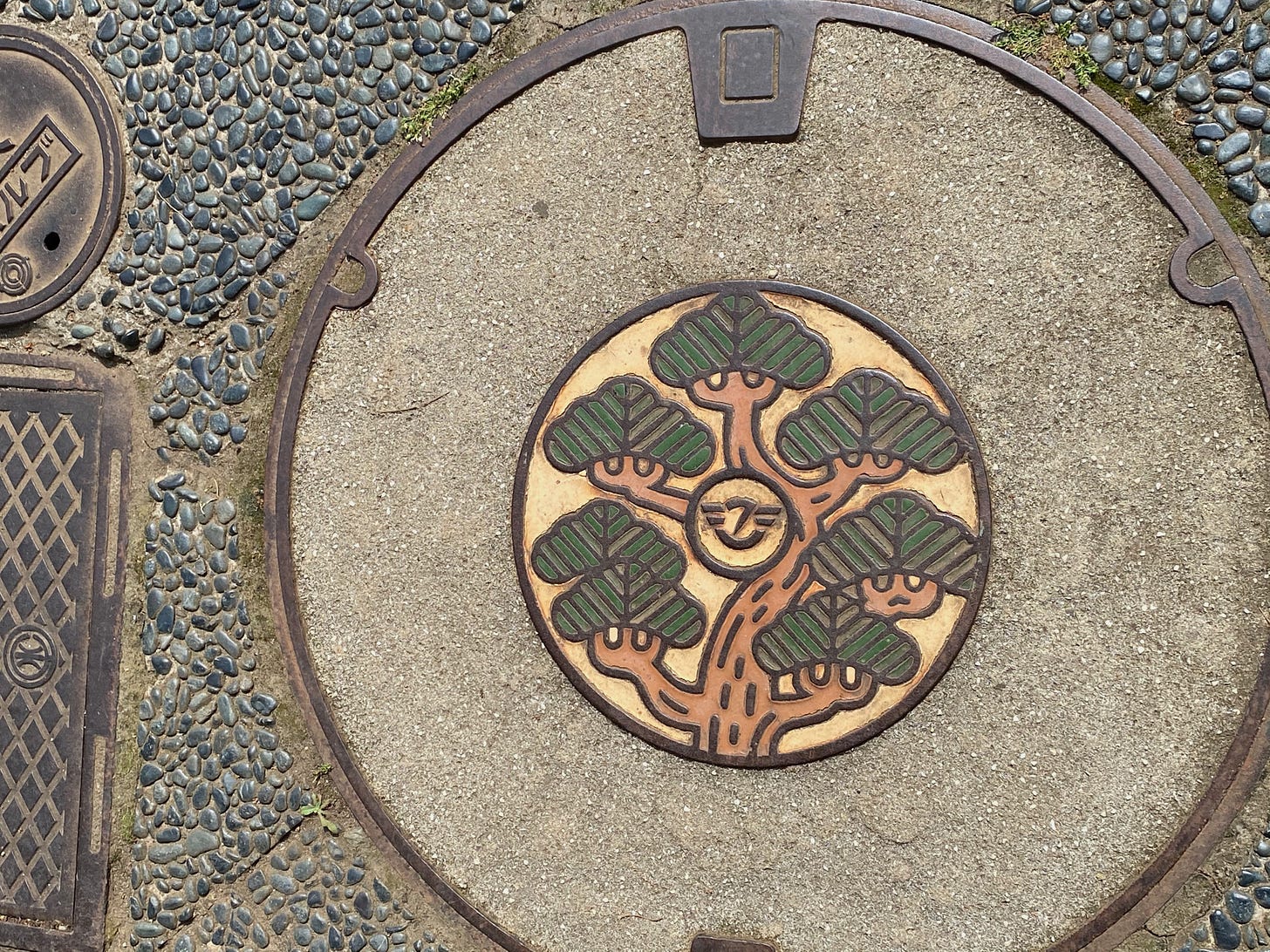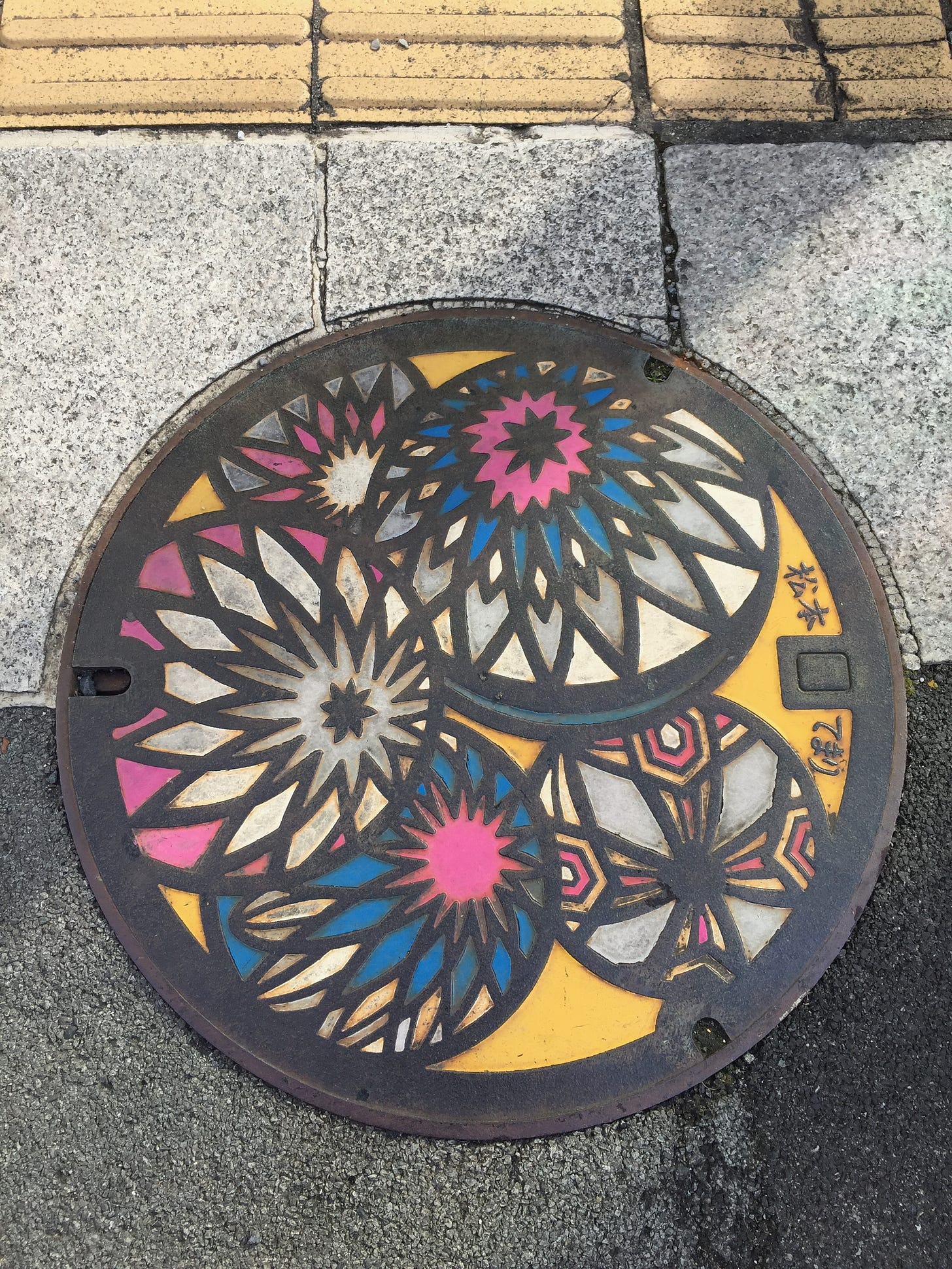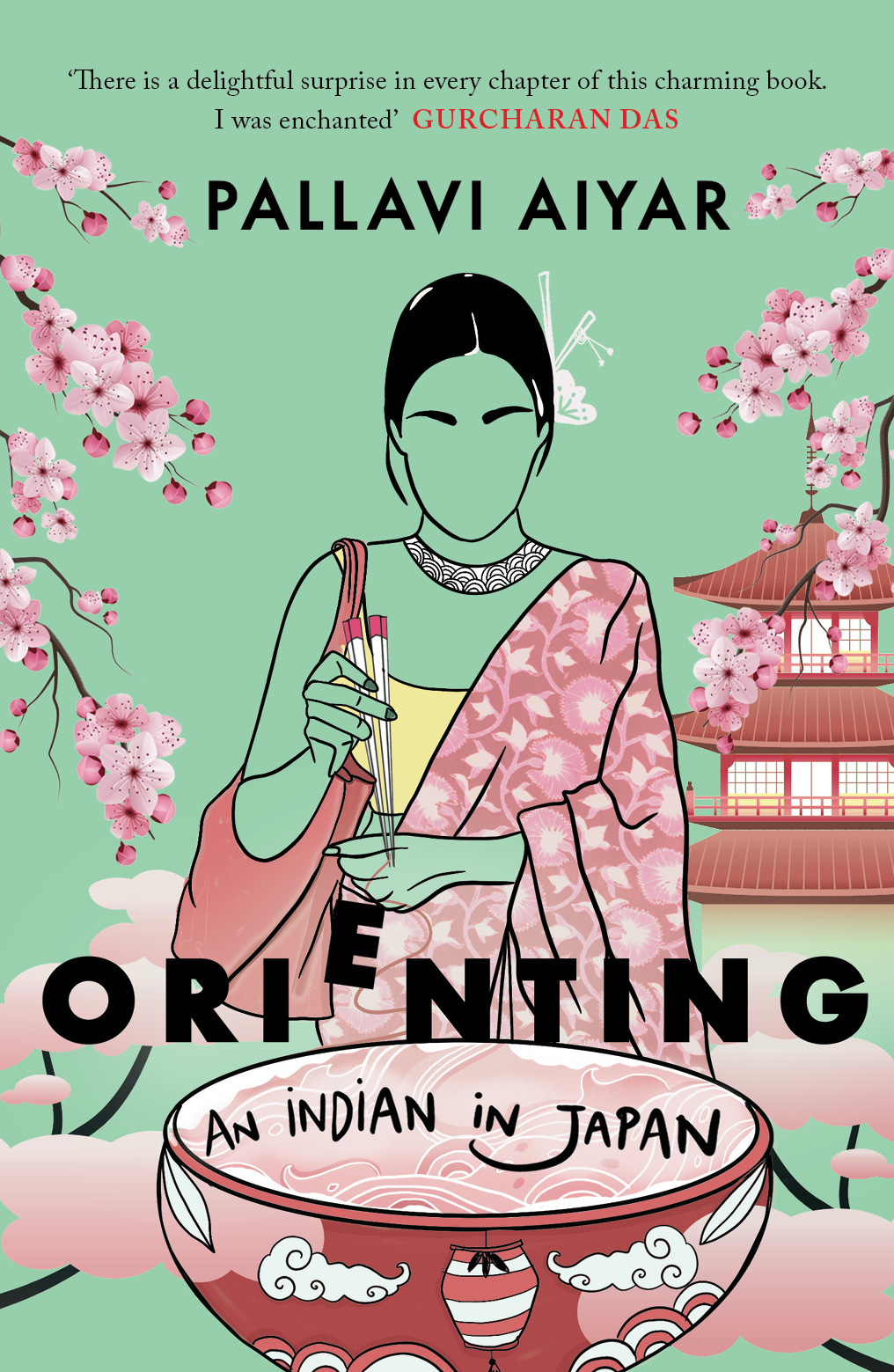Dear Global Jigsawers,
This week we are off to Japan, a country where the transformation of the mundane into the artistic is a “thing”.
Now, the traditional way to discover the archipelago is to take in its shrines, gardens and museums. But the longer I lived in the country the less time I spent training my eyes up at skylines and blossoms and more looking down at the roads, trying to spot manholes.
In Japan, the lowly manhole is its own art form with covers displaying intricate, occasionally painted, designs that reveal something of the unique history or cultural traditions of the cities whose sewers they adorn.
In Tokyo, the standard cover displays sakura or cherry blossom petals, while in Osaka, the city castle is the dominant motif. Port cities display lighthouses and ocean scenes, fishing villages feature fish. Elements of local festivals like lanterns or certain foods are also common.
According to the Japan Society of Manhole Covers (yes, there is such a thing), which maintains an online directory of designs, there are almost 6000 artistic manhole covers spread across the country with trees, landscapes, flowers and birds accounting for the majority.
Manhole cover in Tottori. Pic credit: Pallavi Aiyar
Manhole cover outside my home in Tokyo. Pic Credit: Pallavi Aiyar
Manhole cover in Moji, Kitakyushi. Pic credit: Pallavi Aiyar
Modern sewer systems, with above ground access points called manhoru (manholes) date to the late 19th century in Japan. But it was in the 1980s that the kind of standard drab manhole coverings with unremarkable geometric patterns transformed into the artistic works of today.
At the time, several Japanese cities were slated for a sewage system overhaul, but these were met with public resistance to the cost and disruption. The idea that aesthetically appealing covers might make citizens more amenable to, and sensitized about, the importance of good sewage was floated by bureaucrats, and took hold.
Before long, municipalities were holding design competitions and vying with each other for the most appealing images. And this being Japan, the global capital of enthusiasts for obscure passions, dedicated groups of manholers began spending their free time tracking down unique designs, photographing them and even getting down on their knees to take ink impressions of covers.
Manhole cover in the city of Nara, Pic Credit: Pallavi Aiyar
Manhole cover in Enoshima. Pic Credit: Pallavi Aiyar
In the decades since, a slew of books detailing the covers have been published. A recent example is Manhole: Japanese culture and history represented by the design, authored by retired Tokyo Metropolitan Government official, Hidetoshi Isshi who spent over 20 years cycling across 1,700 municipalities photographing manholes.
An Amazon search revealed another book called Quilting with manhole covers, a book of designs for quilters all taken from manholes in Japan.
Websites and social media fora for manholers are numerous and there is a sewage promotion platform, Gesuido Koho Purattofomu (GKP) that has launched a series of collectible picture cards featuring manhole designs. These cards are available for free at local government facilities like sewage plants.
According to GKP more than a million cards have been issued since they were first introduced in April 2016. The organization reckoned there are roughly 12,000 discrete manhole cover designs in the country.
A story in the Japan Times featured a travel agency in Saitama Prefecture, near Tokyo, that has developed a bus tour allowing participants to collect manhole cards. Manholers have even got an annual summit going since 2014 where they get together and discuss designs.
It is easy to reduce Japan’s manhole aficionados to an amusing human-interest story. But for me there is something serious, even profound, about the covers. Mahatma Gandhi believed that a society’s commitment to true freedom and dignity lay in its approach to private and public sanitation.
By this parameter India has failed to secure either for its citizens, but Japan has succeeded. Beautiful manhole covers elevate what has always been considered the dirty, humiliating aspects of human living- refuse, sanitation, drainage- into artifacts of beauty, to be beheld, acknowledged, and wondered at.
This is no mean feat. I would argue that it is amongst the more significant gifts that Japan had to offer the world.
Manhole cover in Matsumoto. Pic Credit: Pallavi Aiyar
Thank you for reading. Please consider becoming a paid member of the Global Jigsaw so that I can keep the newsletter going.
Also, do share, if you enjoyed the post.
My book on Japan, Orienting: An Indian in Japan is avaialble for purchase here:
The Audio book (voiced by me) is available here and on other audio platforms worldwide.
Hasta la proxima,
xo
Pallavi




